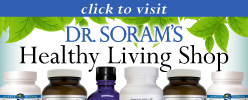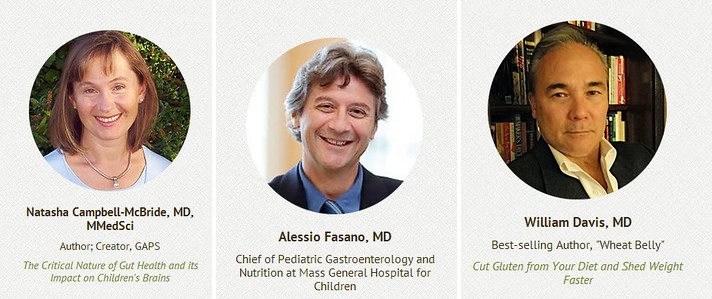
Of all the chronic diseases that are in the world today, my patients express the most fear about their developing Alzheimer’s disease, and with good reason.
Yes, of course, my patients also worry about cancer, especially breast cancer, and heart disease, but the good news is that something can be done to treat these diseases and most especially prevent these diseases.
Alzheimer’s disease has come from being a rare condition just several years ago to now the sixth leading cause of death in America. Other surprising statistics about Alzheimer’s disease include:
- Alzheimer’s disease is now epidemic with more than 5 million Americans having the disease today.
- Someone in America develops Alzheimer’s disease every 68 seconds now.
- It is expected that by 2050 the number of people living with Alzheimer’s could triple.
- In 2013, Alzheimer’s will cost the nation $203 billion. This number is expected to rise to $1.2 trillion by 2050.
- Alzheimer’s has gone from not even being in the top 10 causes of death a few years ago to now being the sixth leading cause of death in the United States.
- And finally, shockingly, Alzheimer’s disease is the only cause of death among the top 10 in the United States that cannot be prevented, cured, or even slowed.
The video below shows what’s happening in America with Alzheimer’s disease and the tremendous cost to the family of the person with the disease.
Integrative doctors including myself, firmly believe that this rapid increase in Alzheimer’s disease is caused in part,by environmental toxicity. So many of the toxins in our environment that we are exposed to every day, from the Mercury in the fish we eat, to the pesticides in our food, and to the solvents in our environment are all known to be neurotoxins.
Increasingly I talk to my patients about the importance of not only avoiding their exposure to these chemicals but also using principles of Naturopathic Medicine to detoxify them out of the body. And yet so many people are just not interested in doing detoxification or don’t believe that it is relevant.
The same neurotoxins that we are getting exposed to, is also believed to be a large part of the cause of the current epidemic of neurodevelopmental disorders in our young children, who are born to innocent mothers who do not realize they carry a toxic load that they give to their fetuses.
We are starting to see conventional journal articles pay attention to this role of environmental toxins for its part in contributing to the epidemic of Alzheimer’s Disease.
A recent article that you can read here, entitled Does inorganic mercury play a role in Alzheimer’s disease?, concludes that “inorganic mercury may promote neurodegenerative disorders” and that “inorganic mercury may play a role as a cofactor in the development of Alzheimer’s disease. It may also increase the pathological influence of other metals.”
This is why I pay strict attention to my patients’ elevated mercury levels and encourage them to detoxify it out.
The good news about all this is an enormous amount of energy is now being poured into the diagnosis and treatment of Alzheimer’s disease and hopefully some money is going to be poured into prevention as well.
Two new articles are showing things that seem to be protective against Alzheimer’s.
We do know that the ApoE4 protein is a major genetic risk factor for Alzheimer’s disease. It is estimated that up to 25% of Americans have this genetic pattern.It is also known that about 66% of Alzheimer’s patients are known to have this. Some cardiologists and neurologists are now testing for this gene.
Now, a new article has been published in the Proceedings of the National Academy of Sciences. Researchers are finding that they’re getting closer to find the link between ApoE4 andSirT1, which is an anti-aging protein.
SirT1 protein drops dramatically in the presence of AppoE4. however, the exciting thing is that the researchers found that a common nutritional supplement, which is found in red wine, as well as supplement capsules targeted the link between ApoE4 and SirT1. This means that this common nutritional supplement ****resveratrol**** might be protective against Alzheimer’s disease.
Another new article has come out this week showing that a lack of sleep may increase Alzheimer’s risk. This article was published in the prestigious JAMA neurology. This article shows that those with Alzheimer’s disease are shown to spend more time awake and to have higher levels of fragmented sleep, compared with those who do not have the disorder.
In this study, they found that shorter overall nights sleep duration and poor sleep quality were linked to increased beta – amyloid buildup in the brain. Beta-amyloid deposition in the brain is believed to be the cause of Alzheimer’s.
The study’s authors are quoted as saying “Because late-life sleep disturbance can be treated, interventions to improve sleep or maintain healthy sleep among older adults may help prevent or slow AD to the extent that poor sleep promotes AD onset and progression.” the researchers recommend intervention trials to determine whether longer sleep duration and better sleep quality might prevent or slow the progression of Alzheimer’s disease.
In summary, given the increased focus on research for Alzheimer’s disease, we are finally starting to get some insights into how to prevent and hopefully treat this devastating condition.
I also refer you to my recent article on David Perlmutter, MD’s recommendations to prevent and treat Alzheimer’s disease.
Alzheimer’s Facts and Figures from the US Government




 High-fructose corn syrup (HFCS) has replaced sugar in many processed foods, and is now found in soft drinks and other sweetened beverages, breads, cereals, lunch meats, soup, condiments, yogurt and much, much more.
High-fructose corn syrup (HFCS) has replaced sugar in many processed foods, and is now found in soft drinks and other sweetened beverages, breads, cereals, lunch meats, soup, condiments, yogurt and much, much more.

.aspx?width=190&height=250) Sprouts are tiny, baby plants that are just beginning their journey into the familiar veggies we know. Yet, at this stage the sprout is packed with high concentrations of vitamins, minerals, amino acids and more, which it will need to grow into a mature plant.
Sprouts are tiny, baby plants that are just beginning their journey into the familiar veggies we know. Yet, at this stage the sprout is packed with high concentrations of vitamins, minerals, amino acids and more, which it will need to grow into a mature plant. Accidents are the leading cause of death among toddlers, so keeping your home baby-proof is an essential part of being a parent, grandparent or anyone who has babies and toddlers who visit their home.
Accidents are the leading cause of death among toddlers, so keeping your home baby-proof is an essential part of being a parent, grandparent or anyone who has babies and toddlers who visit their home.

 Every year, 1.3 million Americans undergo LASIK surgery to correct their vision, and most have good results. In fact, only 2 percent to 3 percent of LASIK (which stands for Laser-Assisted In-Situ Keratomileusis) patients have complications, according to the American Society of Cataract and Refractive Surgery.
Every year, 1.3 million Americans undergo LASIK surgery to correct their vision, and most have good results. In fact, only 2 percent to 3 percent of LASIK (which stands for Laser-Assisted In-Situ Keratomileusis) patients have complications, according to the American Society of Cataract and Refractive Surgery.




